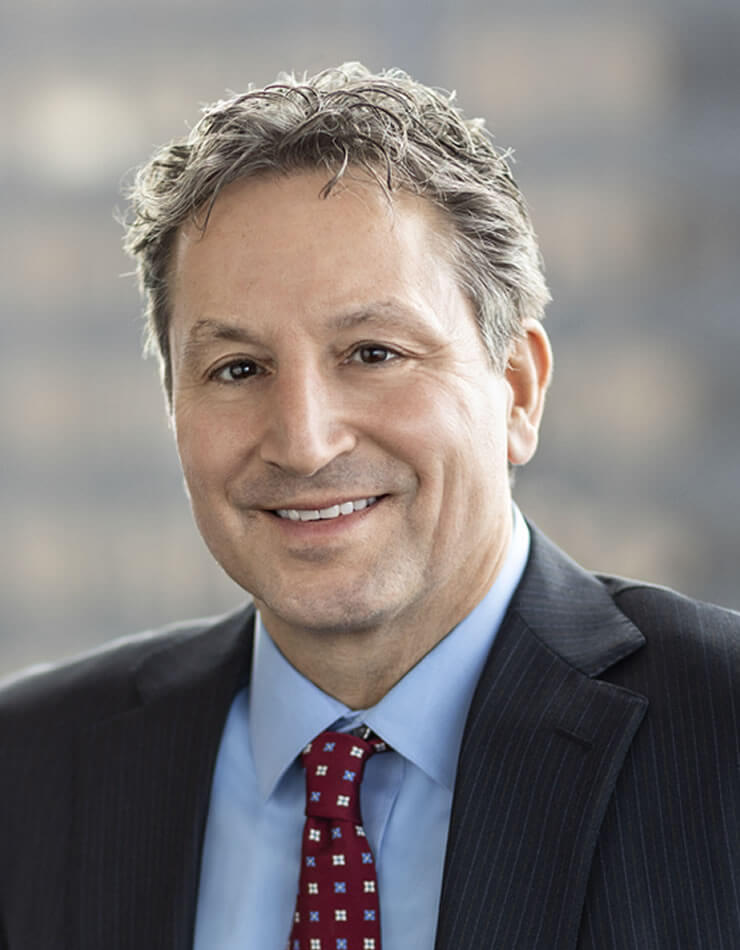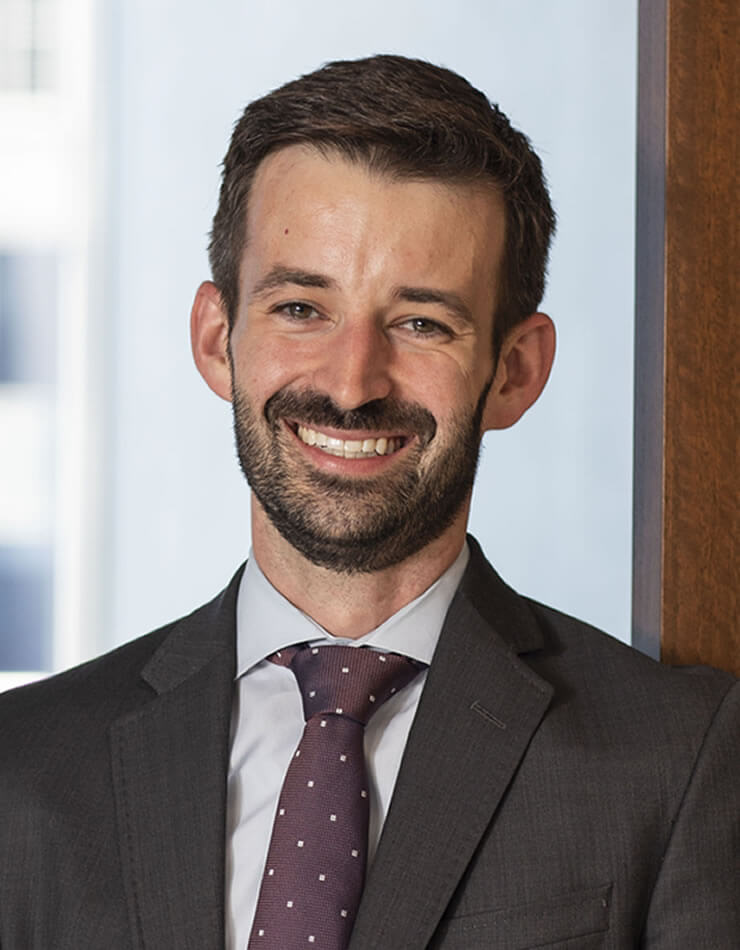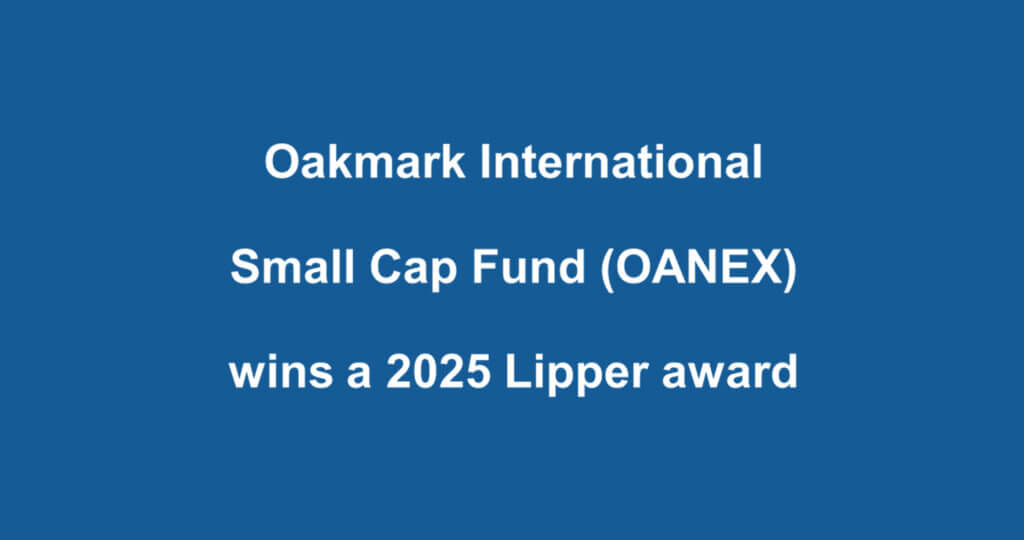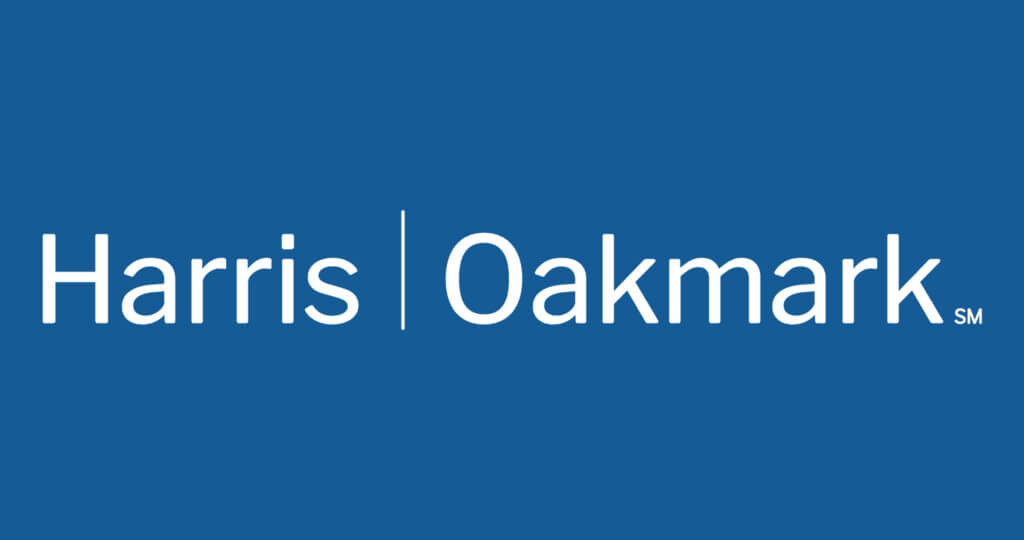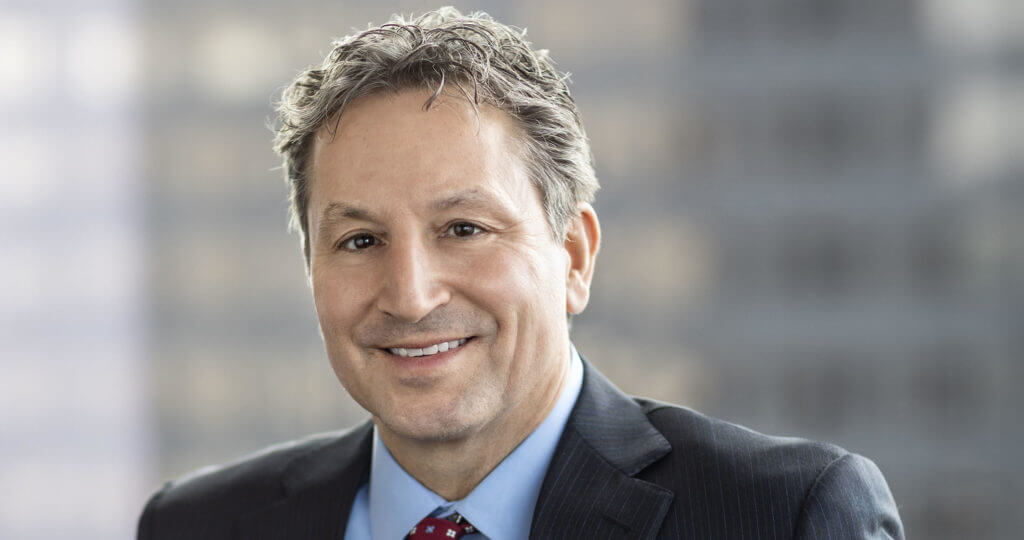Oakmark International Small Cap Fund – Investor Class
Average Annual Total Returns 12/31/22
Since Inception 11/01/95 8.30%
10-year 5.53%
5-year 1.48%
1-year -14.46%
3-month 27.82%
Expense Ratio: 1.35%
Expense ratios are as of the Fund’s most recent prospectus dated January 28, 2022, as amended August 1, 2022 and October 1, 2022; actual expenses may vary.
Past performance is no guarantee of future results. The performance data quoted represents past performance. Current performance may be lower or higher than the performance data quoted. The investment return and principal value vary so that an investor’s shares when redeemed may be worth more or less than the original cost. To obtain the most recent month-end performance data, view it here.
The Oakmark International Small Cap Fund returned 27.8% for the quarter ending December 31. The Fund outperformed the MSCI World ex U.S. Small Cap Index (net), which returned 15.2% for the same period. For the calendar year, the Fund delivered absolute performance of -14.5% compared to the benchmark’s return of -20.6%. Since its November 1995 inception, the Fund has returned an average of 8.3% per year.
The Fund generated positive absolute and relative returns in the fourth quarter. As we discussed in previous letters, equity valuations significantly declined during the first three quarters of 2022, despite the fact that the majority of our portfolio holdings continued to report relatively healthy levels of earnings and cash flow. During the fourth quarter, conditions in equity markets became more favorable as there were early signs of central bank increases in interest rates, improving supply chain conditions, and lower energy prices that could combine to help lower inflation levels in many countries. Furthermore, stronger international currencies relative to the U.S. dollar boosted international equity returns even though most major currencies still ended the year down 5-15% versus the dollar.
The biggest contributors to our performance during the quarter were our industrial, financials and consumer discretionary exposures. While these industries are typically identified as “economically sensitive sectors”, we believe a number of our holdings are likely to be considerably more resilient than the market perceives (see the discussion of our largest position Konecranes below). Our overweight exposure to these sectors is not the result of macro predictions, but rather a reflection of valuation as there remain several high-quality companies in these sectors still trading at highly attractive valuations given some investors’ macro concerns. As we enter 2023, we believe the portfolio is attractively valued as it trades just north of 50% of our estimate of intrinsic value despite the fourth-quarter recovery and most international currencies remain undervalued relative to the U.S. dollar. We think this presents an attractive backdrop for generating positive absolute and relative returns over the next three to five years. All three of the Fund’s portfolio managers were significant buyers of the Fund during 2022.
Konecranes, a Finnish engineering firm that specializes in overhead lifting equipment, was a top contributor to the Fund for the quarter. Konecranes’ strong third-quarter results positively surprised investors. Total revenue rose 14.4% (+8.8% in local currency) from a year ago and was slightly ahead of our estimates. The company’s revenue, orders received, adjusted earnings and earnings per share all meaningfully surpassed market expectations. We appreciate that the company’s performance has improved from the past few quarters, which we attribute in part to price increases of 8-9% across the portfolio. Results were especially robust in Konecranes’ flagship service segment, which generates significantly more recurring and less volatile revenue than its equipment businesses and accounts for roughly two-thirds of the company’s profitability. Service sales grew by 8.8% in local currency, propelled by broad-based growth in all three regions and in both the spare parts and field service segments. In addition, due to easing supply chain issues and management’s adept handling of labor challenges, Konecranes’ delivery capability has improved, and its third-quarter margins expanded to record levels for the segment. We believe that the company’s third-quarter order intake increases in industrial equipment (+8.6% local currency) and port solutions (+114.5% local currency), combined with the high backlogs in those areas, indicate stronger future revenue and profitability for these segments. Management also announced a EUR 30-35 million cost savings plan targeted at the industrial equipment and service segments and maintained its full-year guidance. We believe that management is taking the correct steps to navigate a challenging environment and that Konecranes remains an attractive investment.
Sarana Menara Nusantara, an investment company based in Indonesia that owns and operates telecommunication towers for wireless operators, was a top detractor for the quarter. In November, the company reported third-quarter revenue growth of 33% year-over-year and 3% quarter-over-quarter. In addition, total towers and total tenants increased by 37% and 36%, respectively, from one year ago, helped by recent acquisition activity. We met with the company’s CFO, Steve Weiss, at its headquarters during the quarter and gained a better understanding of how the company plans to mitigate impacts from the Hutch-Indosat merger and leverage the positive effects of the passage of the 2020 omnibus law. Our analysis indicates that one key effect of the omnibus law is that, by opening up the market to foreign capital, recent tower transactions involving foreign buyers have generated more attractive multiples than Sarana Menara Nusantara’s current trading multiples. This suggests that the stock market may be undervaluing Sarana Menara Nusantara’s assets and there may be an opportunity for a transaction involving the company’s shares that could benefit our shareholders.
During the quarter, we initiated a new position in MGM China Holdings (China) as well as Melco Resorts & Entertainment ADR (China). We sold our position in the latter by the end of the quarter because its share price swiftly appreciated toward our sell target.
Geographically, we ended the quarter with approximately 81% of our holdings in Europe and the U.K., 11% in Asia, and 4% in Australasia. The remaining positions are in the Americas with 4% in Latin America (Mexico), 1% in Africa/Middle East (Israel), and 1% in North America (Canada).
Thank you for your continued confidence in our investment process.
The securities mentioned above comprise the following preliminary percentages of the Oakmark International Small Cap Fund’s total net assets as of 12/31/2022: Konecranes 3.6%, Melco Resorts & Entertainment ADR 0%, MGM China Holdings 0.5% and Sarana Menara Nusantara 0.7%. Portfolio holdings are subject to change without notice and are not intended as recommendations of individual stocks.
The MSCI World ex US Small Cap Index (Net) is designed to measure performance of small-cap stocks across 22 of 23 Developed Markets (excluding the United States). The index covers approximately 14% of the free float-adjusted market capitalization in each country. This benchmark calculates reinvested dividends net of withholding taxes. This index is unmanaged and investors cannot invest directly in this index.
On occasion, Harris may determine, based on its analysis of a particular multi-national issuer, that a country classification different from MSCI best reflects the issuer’s country of investment risk. In these instances, reports with country weights and performance attribution will differ from reports using MSCI classifications. Harris uses its own country classifications in its reporting processes, and these classifications are reflected in the included materials.
The Fund’s portfolio tends to be invested in a relatively small number of stocks. As a result, the appreciation or depreciation of any one security held by the Fund will have a greater impact on the Fund’s net asset value than it would if the Fund invested in a larger number of securities. Although that strategy has the potential to generate attractive returns over time, it also increases the Fund’s volatility.
The stocks of smaller companies often involve more risk than the stocks of larger companies. Stocks of small companies tend to be more volatile and have a smaller public market than stocks of larger companies. Small companies may have a shorter history of operations than larger companies, may not have as great an ability to raise additional capital and may have a less diversified product line, making them more susceptible to market pressure.
Investing in foreign securities presents risks that in some ways may be greater than U.S. investments. Those risks include: currency fluctuation; different regulation, accounting standards, trading practices and levels of available information; generally higher transaction costs; and political risks.
The information, data, analyses, and opinions presented herein (including current investment themes, the portfolio managers’ research and investment process, and portfolio characteristics) are for informational purposes only and represent the investments and views of the portfolio managers and Harris Associates L.P. as of the date written and are subject to change and may change based on market and other conditions and without notice. This content is not a recommendation of or an offer to buy or sell a security and is not warranted to be correct, complete or accurate.
Certain comments herein are based on current expectations and are considered “forward-looking statements”. These forward looking statements reflect assumptions and analyses made by the portfolio managers and Harris Associates L.P. based on their experience and perception of historical trends, current conditions, expected future developments, and other factors they believe are relevant. Actual future results are subject to a number of investment and other risks and may prove to be different from expectations. Readers are cautioned not to place undue reliance on the forward-looking statements.
All information provided is as of 12/31/2022 unless otherwise specified.
